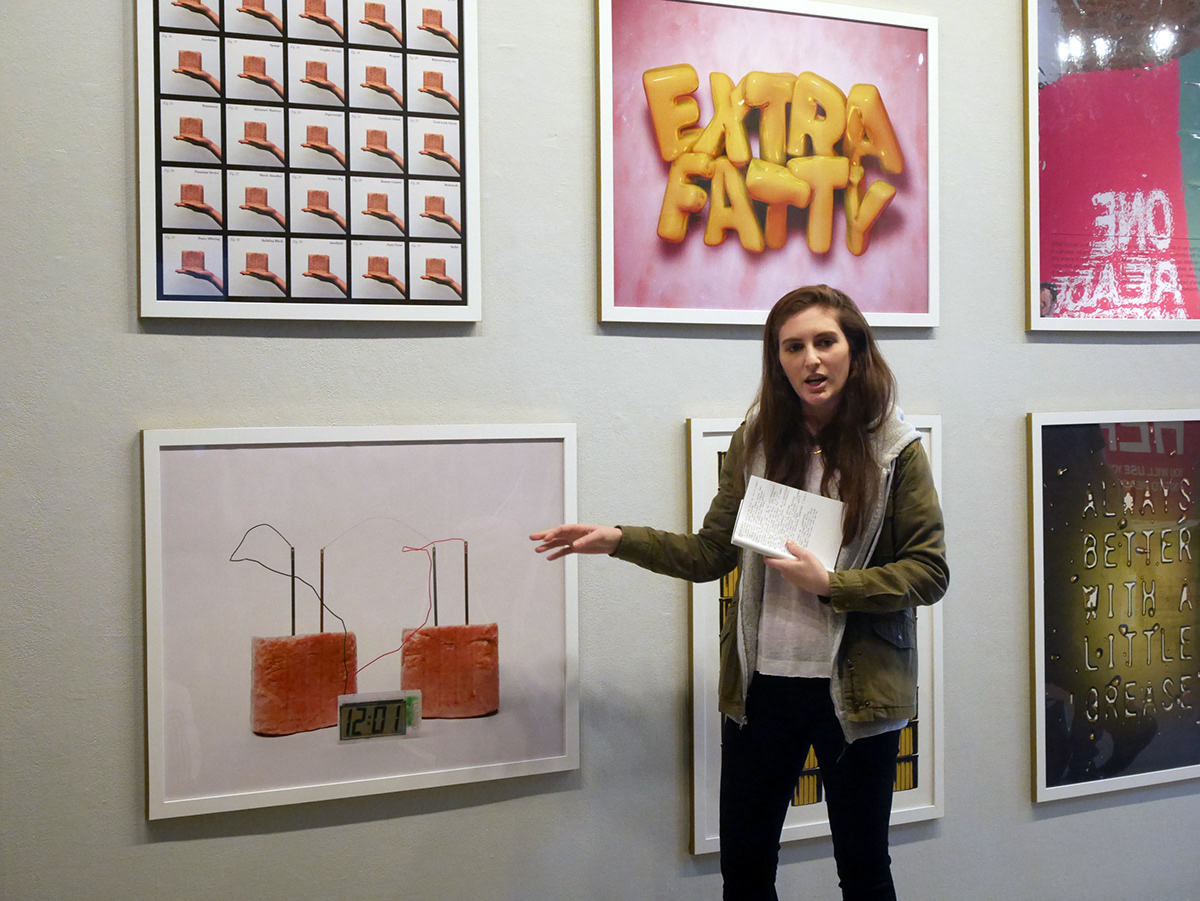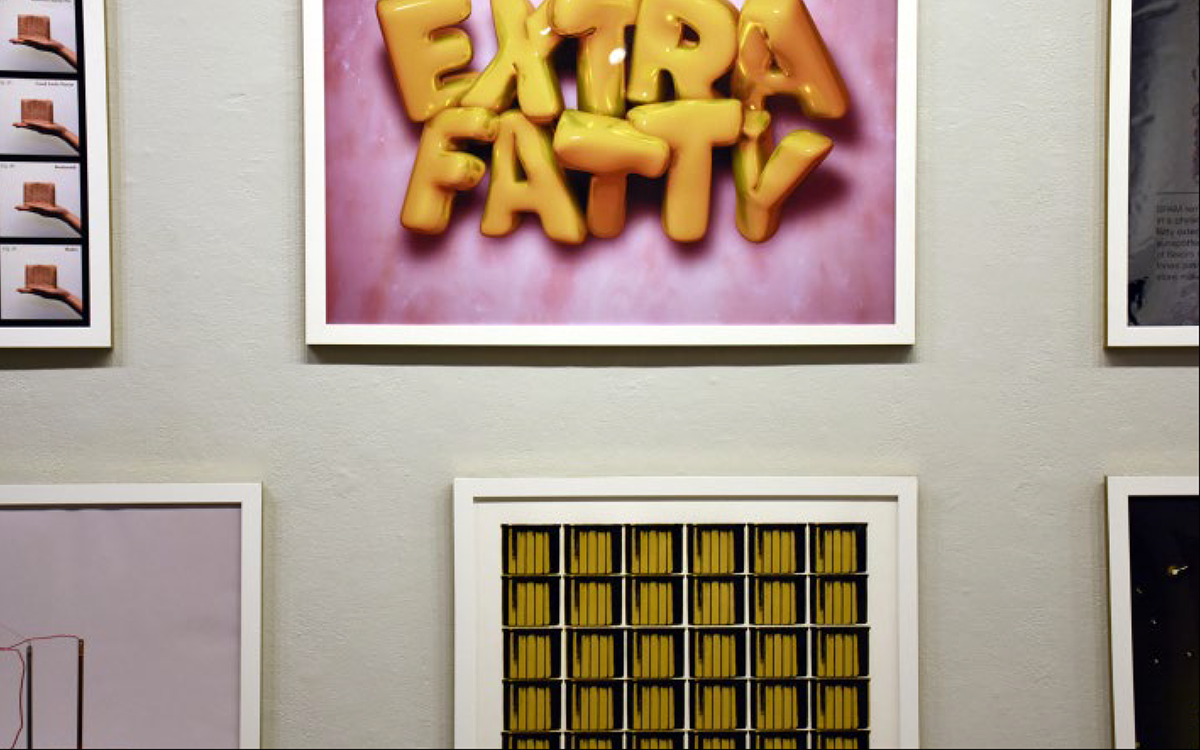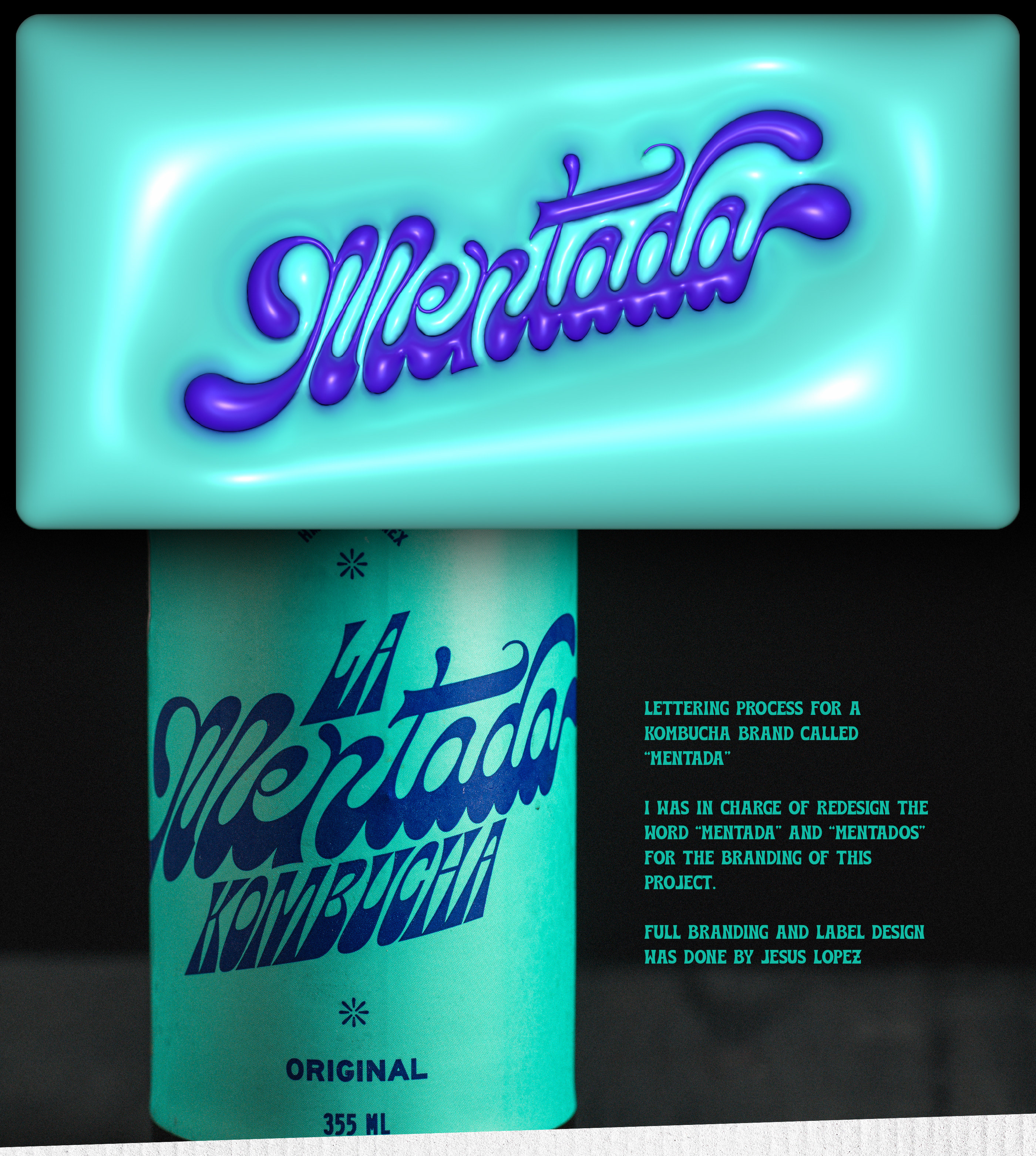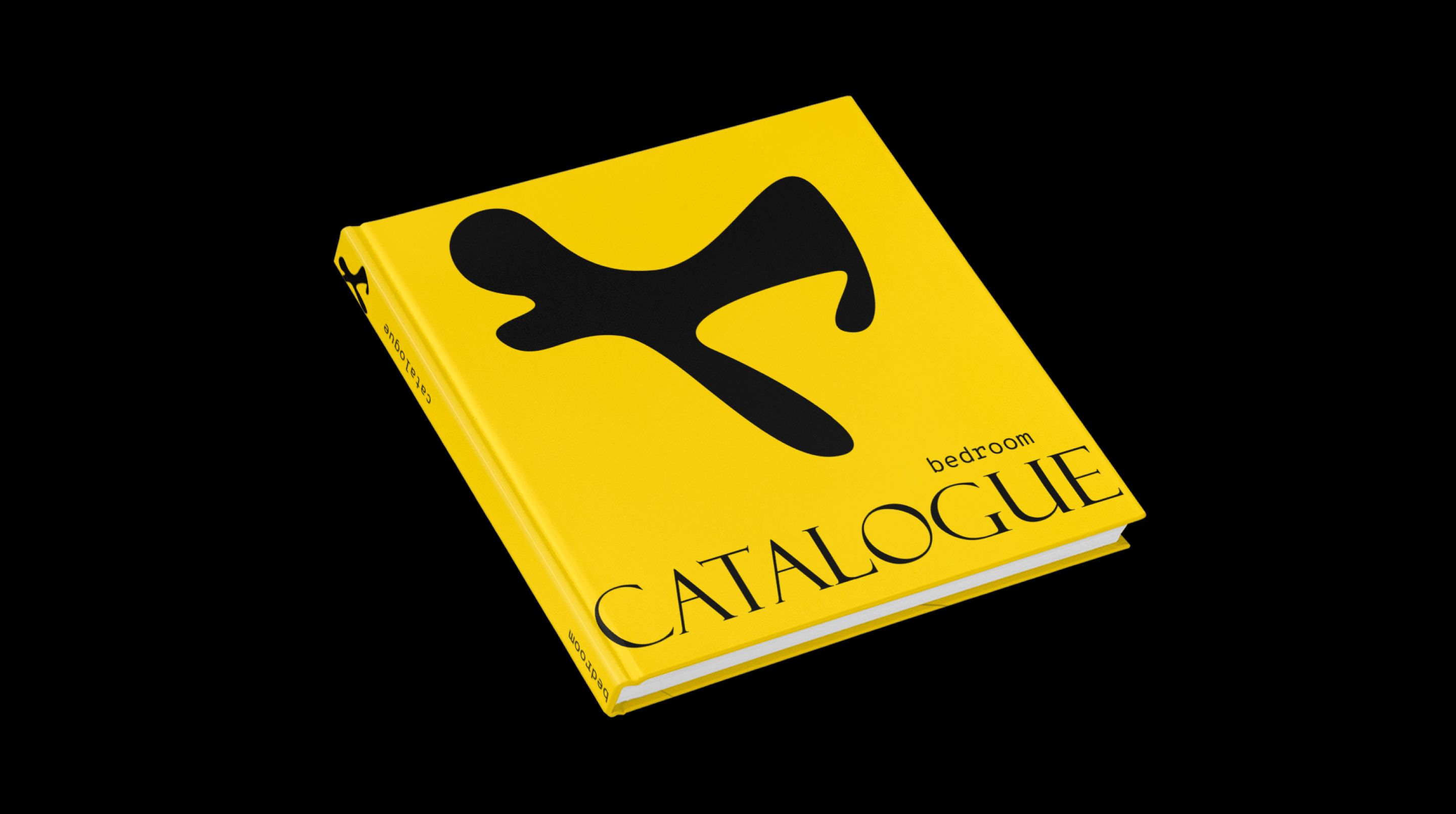
Spiced Design Ham
A true testament to the wonders of mechanical separation, heavy processing and pig parts!
Who doesn’t love loafed, congealed meat? Spiced Design Ham uses SPAM as a vehicle to comment on the accessibility and democratization of graphic design. Following the format of design as recipe, each experiment is a self-contained exploration into the versatility of ingredients that are readily available to all designers, ranging from highbrow to lowbrow. Spiced Design Ham challenges how we define “good” design so that we may begin to embrace the canned materials of design, no matter how initially off-putting they may seem. Like design, SPAM is for anyone but certainly not for everyone.
Process/ Method Acting
This project began by taking a method acting approach. I started by recreating SPAM recipes from the 1950s - present to fully understand the limitations and best uses of the canned meat as a raw material. My biggest takeaway from the performative action of cooking was that the grid is obvious in SPAM, as the first act when cooking SPAM is always to slice it multiple ways. I also learned via consumption that SPAM has an aftertaste that lingers, assaults the senses, and is unapologetically salty.






Slicing & Dicing
This poster follows the direct steps involved in cooking SPAM in its simplest form. Starting with simple removal from its can, slicing it and rotating halfway through cooking, this poster mimics the cooking process through various design cues.


Ingredients: SPAM Original Flavor, Camera, Adobe Photoshop, Adobe InDesign
Recipe: Cook a can of SPAM following the basic steps of preparation listed on the back of a SPAM can.
User-Generated Content
SPAM is readily accessible to cooks and chefs of all calibers. Keeping within the framework of only designing with what is truly accessible, this poster uses Amazon.com reviews of SPAM for its copy, recognizing that creators and consumers of content are now one in the same. While these reviews directly reference SPAM, they can also be reinterpreted to be indirectly talking about graphic design.

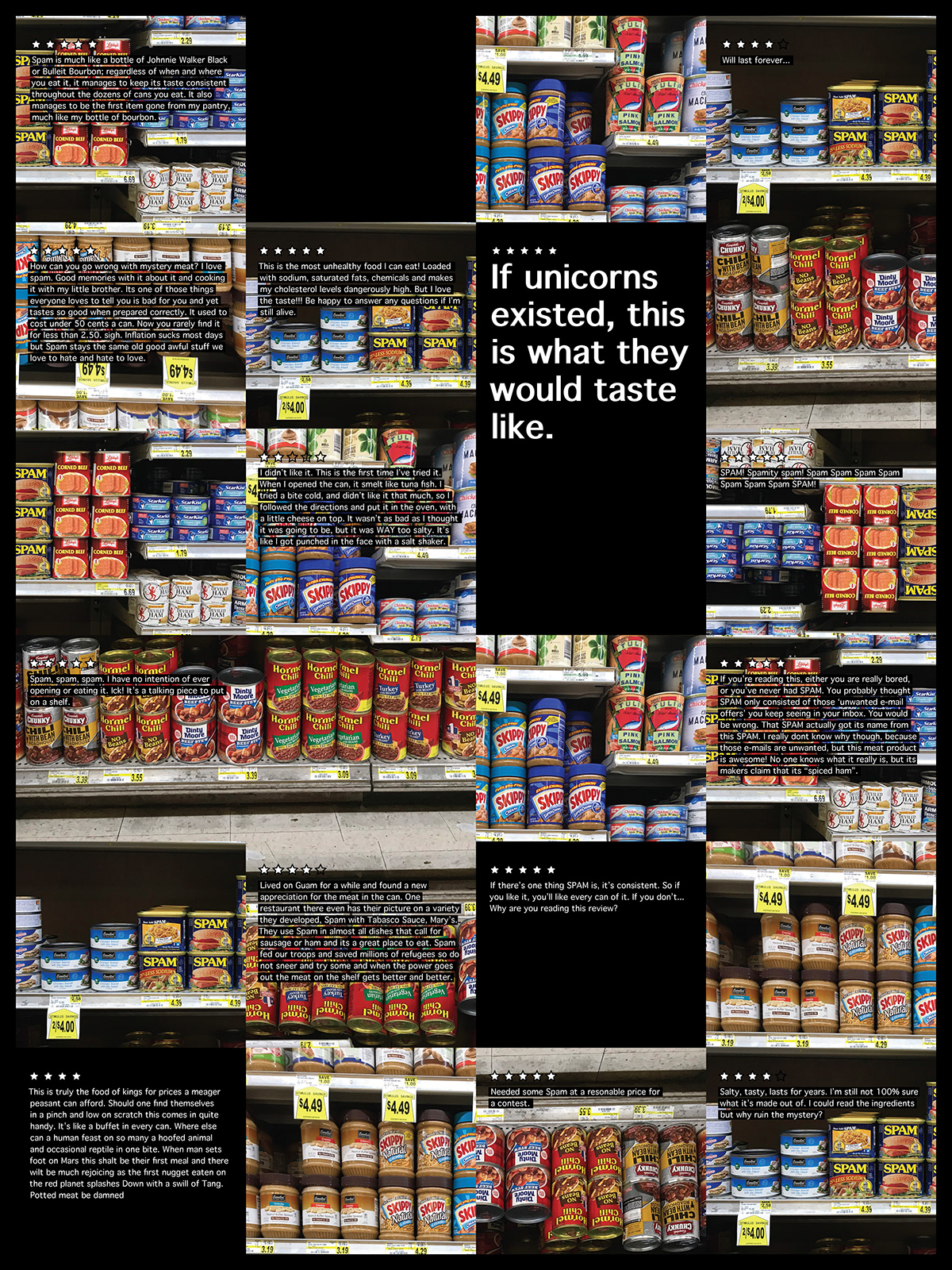
Ingredients: SPAM in its Natural Habitat, Camera, Adobe Photoshop, Adobe InDesign, Thonburi Font, Amazon.com Reviews
Recipe: Locate SPAM in its natural habitat. Photograph it as well as its surroundings. Slice SPAM and cook to desired level of doneness, rotating halfway through cooking. Make use of Amazon.com SPAM reviews for copy.
SPAM Two Ways
This poster takes a vintage SPAM recipe (a SPAM Porcupine) and reimagines it through its graphic design equivalent.
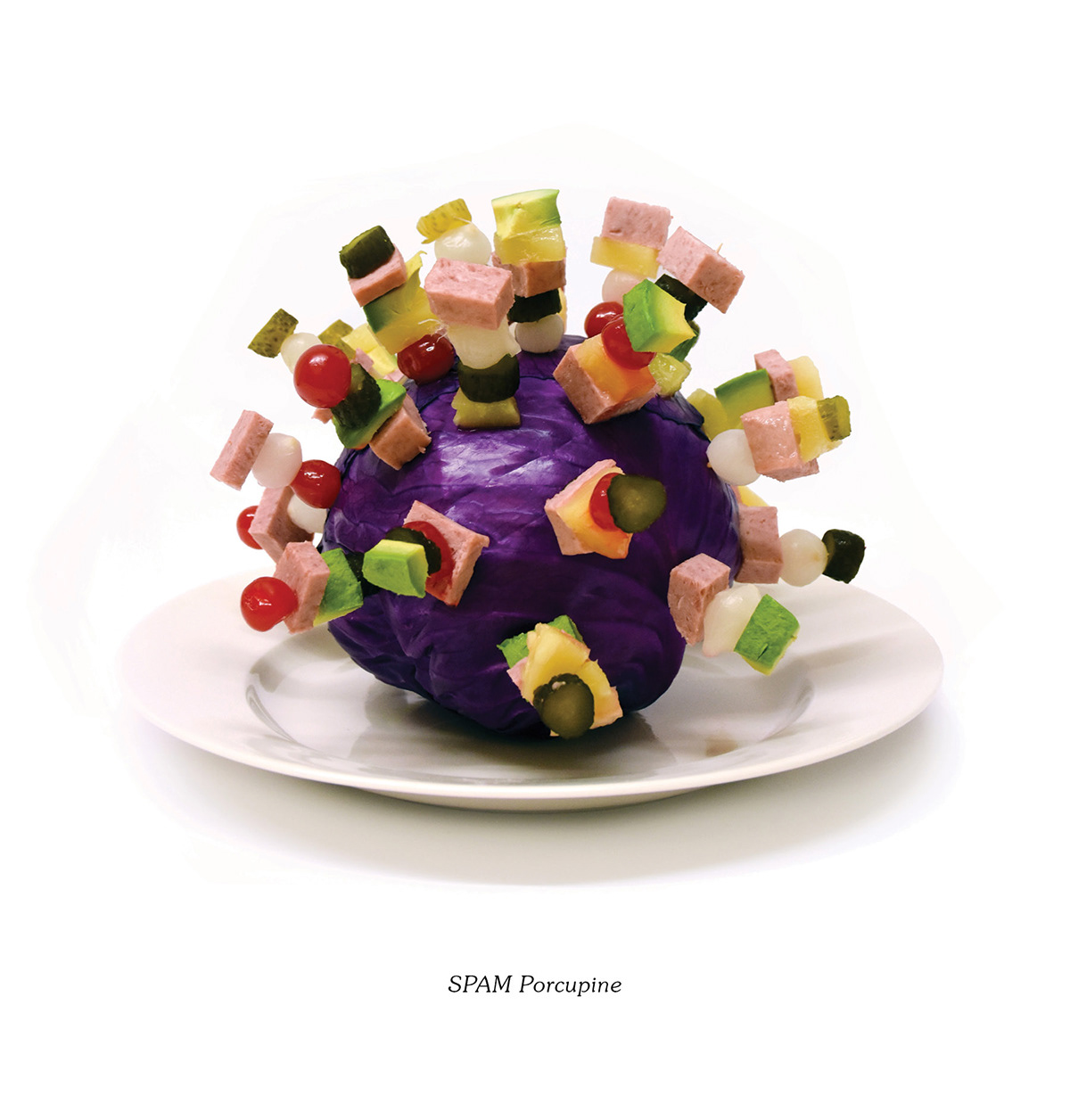
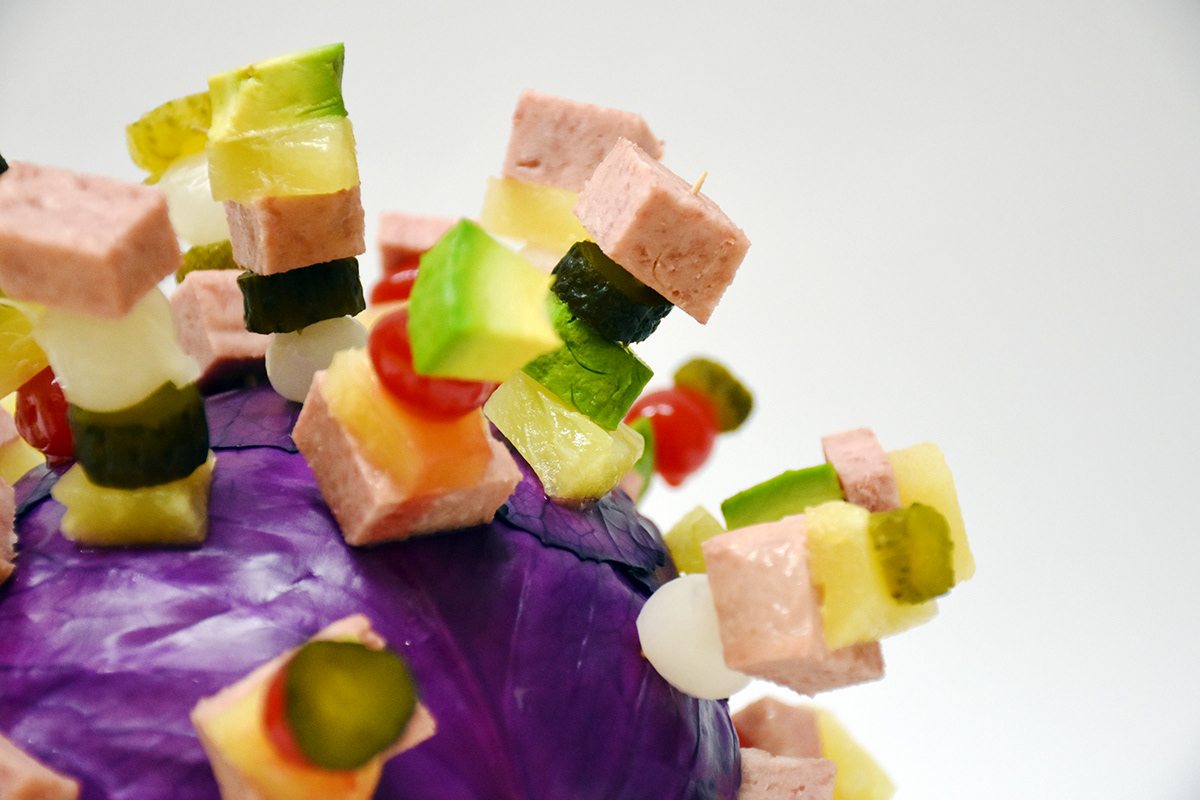
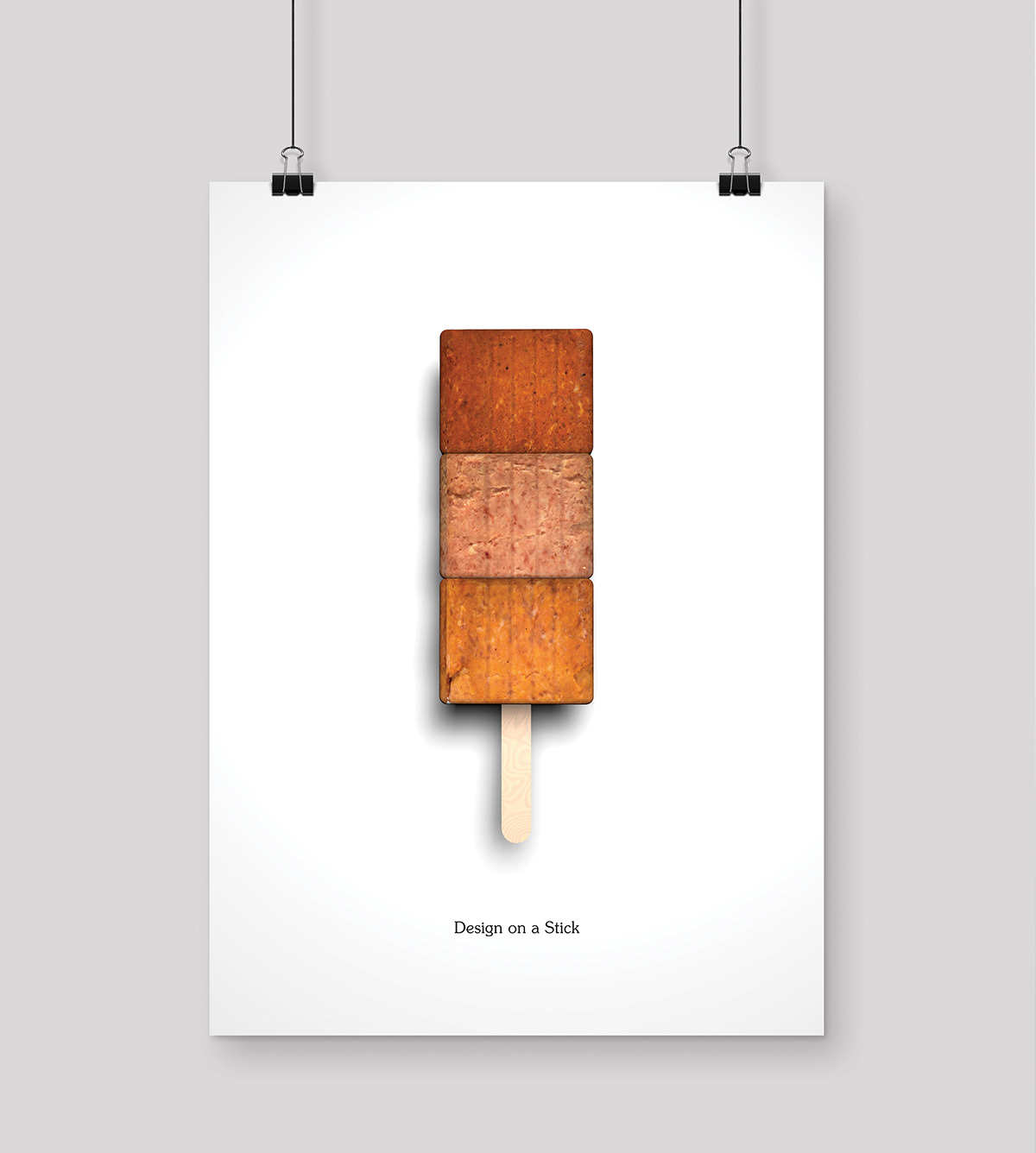

Ingredients: SPAM Original Flavor, SPAM Chorizo Flavor, SPAM Teriyaki Flavor, Camera, Cinema 4D, Adobe Photoshop, Adobe InDesign, ITC Souvenir Std
Recipe: Re-contextualize a SPAM recipe from a different era and give it a contemporary twist, making it look new and fresh.
The Ultimate Blank Canvas
SPAM is the ultimate blank canvas, with its uses evolving from its storied past when used as shoe polish during WWII to its current use as a pragmatic dinner for four. This poster explores the full potential of the medium, looking at it through a humorous, absurdist lens.
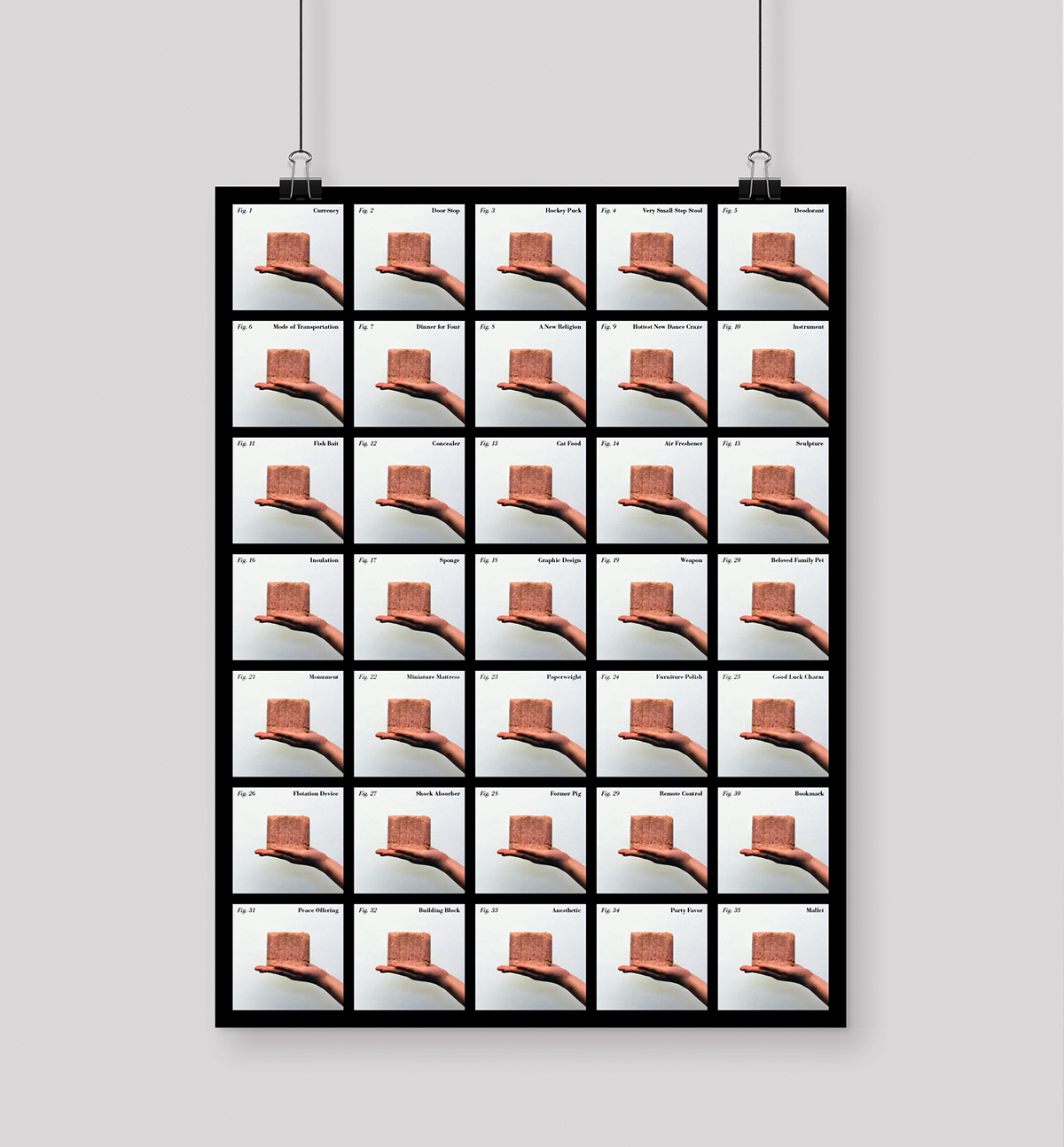

Ingredients: Camera, Adobe Photoshop, Adobe InDesign, Bauer Bodoni Font
Recipe: Explore the full potential of SPAM as the ultimate blank canvas, leaving no stone unturned in determining its best uses.
Assisted Readymade
SPAM is a readymade, as you can eat it straight from the can without any further preparation. This assisted readymade explores the inherent functionality of SPAM through a fully functioning meat clock.


Ingredients: SPAM Original Flavor, Camera, DIY Potato Clock, Adobe Photoshop
Recipe: Pair SPAM with another readymade to make something innovate, puzzling, and unexpected. Both readymades should have their original use compromised by being paired together.
Extra Fatty
With food trend increasingly embracing healthier, organic options, SPAM embraces its saltier, fattier side. Instead of removing the fat (and moving increasingly towards minimalism), this experiment explored the aesthetics of what it means to put the fat back in, literally.
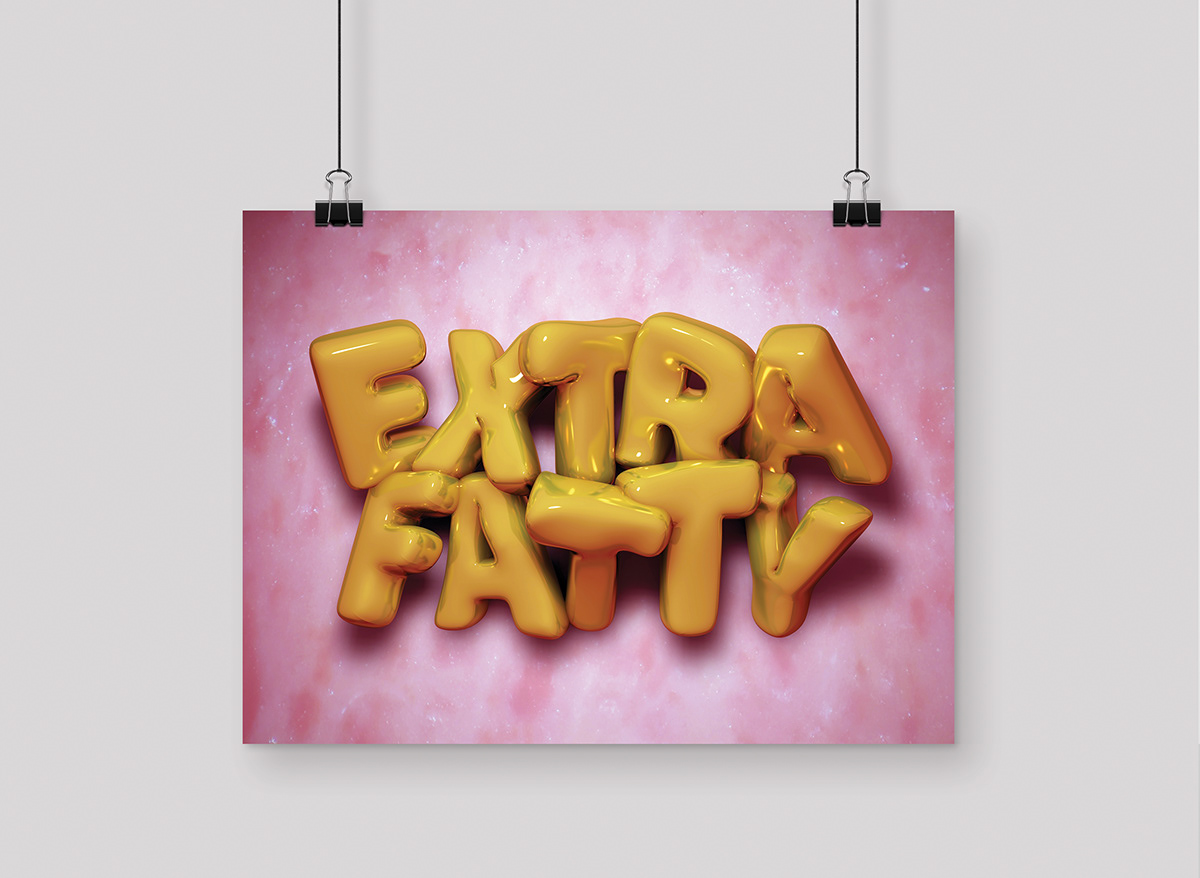
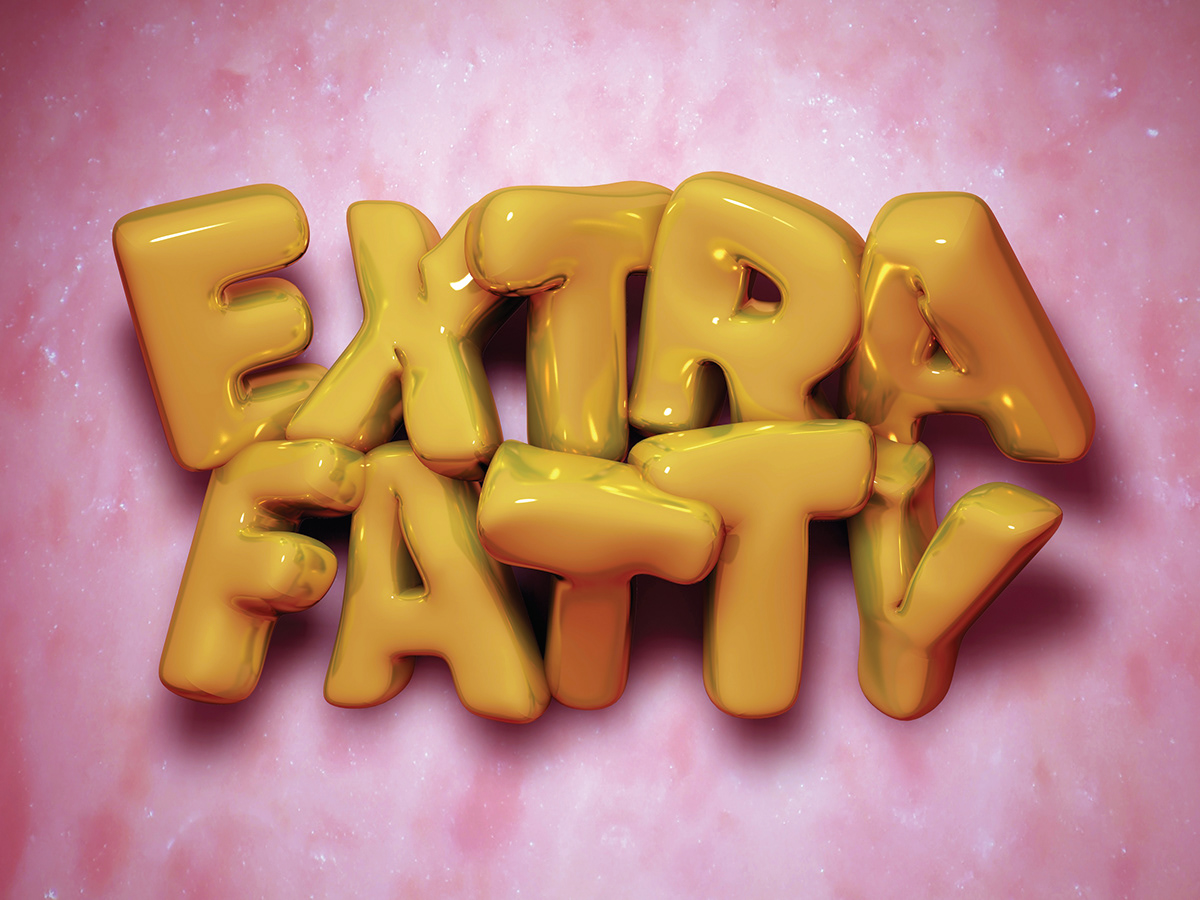
Ingredients: SPAM Original Flavor, Camera, Adobe Photoshop, Segoe UI Font, Cinema 4D
Recipe: Put the fat back in.
Six Simple Ingredients
SPAM is deceptively simple. It consists of only six simple ingredients: pork and ham, water, salt, sugar, sodium nitrite and potato starch. This letterpress poster mashes together all six ingredients to create SPAM.

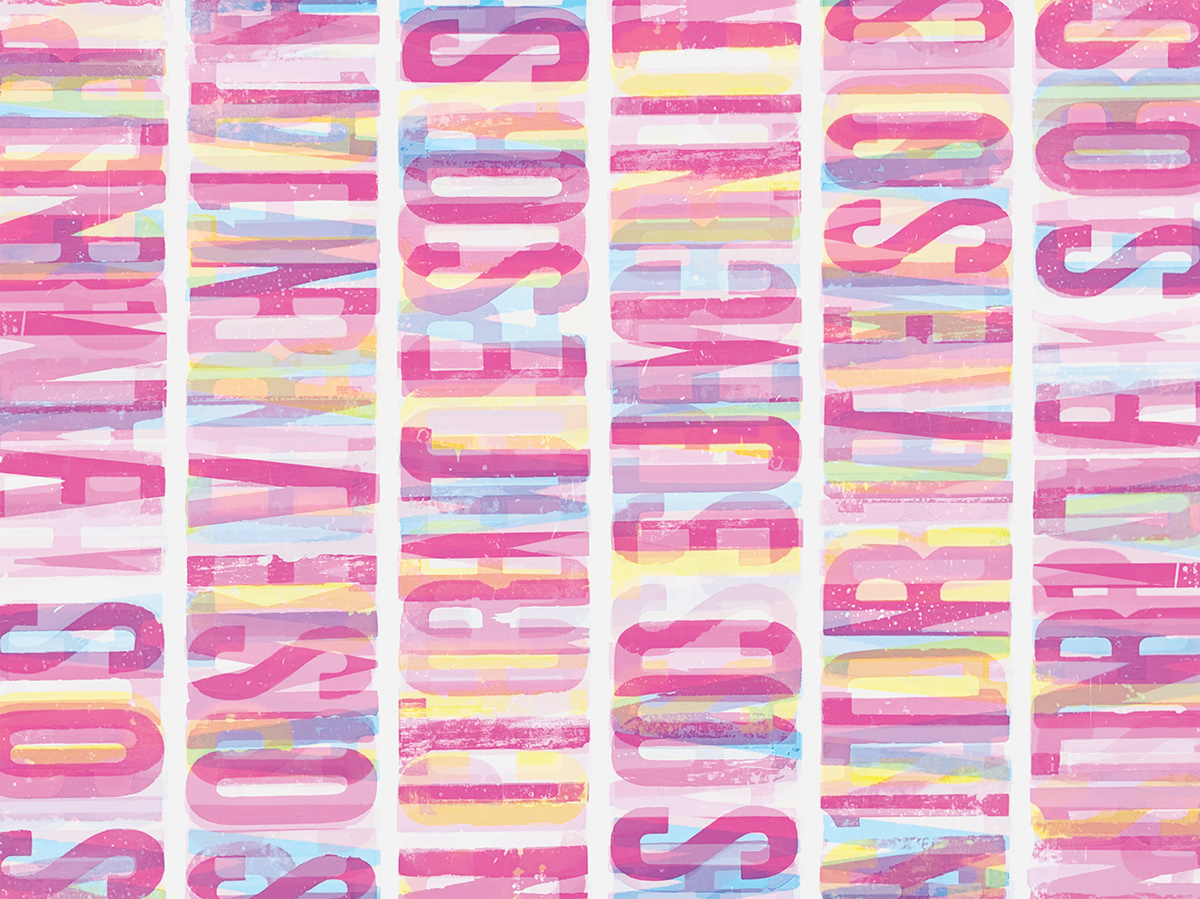
Ingredients: Pork and Ham, Salt, Potato Starch, Sugar, Sodium Nitrite, Water
Recipe: Combine these six simple ingredients together to make SPAM.
Mechanical Separation
This poster explores the relationship between food vernacular and that of graphic design. Since SPAM is a mechanically separated meat, what does mechanical separation look like in design? This silkscreened poster explores the translation of this idea through bitmap halftones as a direct link between food and design while staying within the pop canon (a nod to SPAM's label and logotype.)
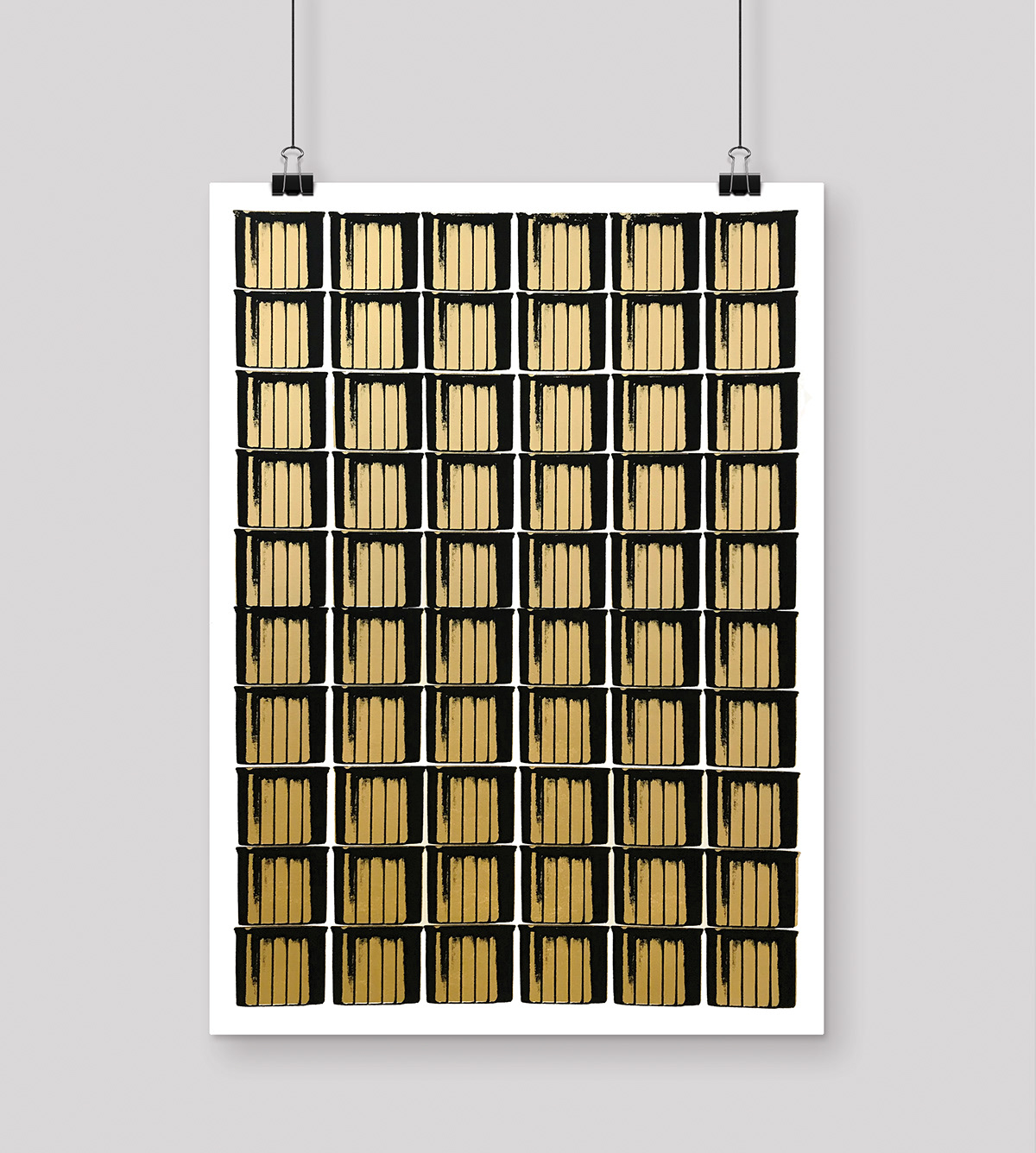
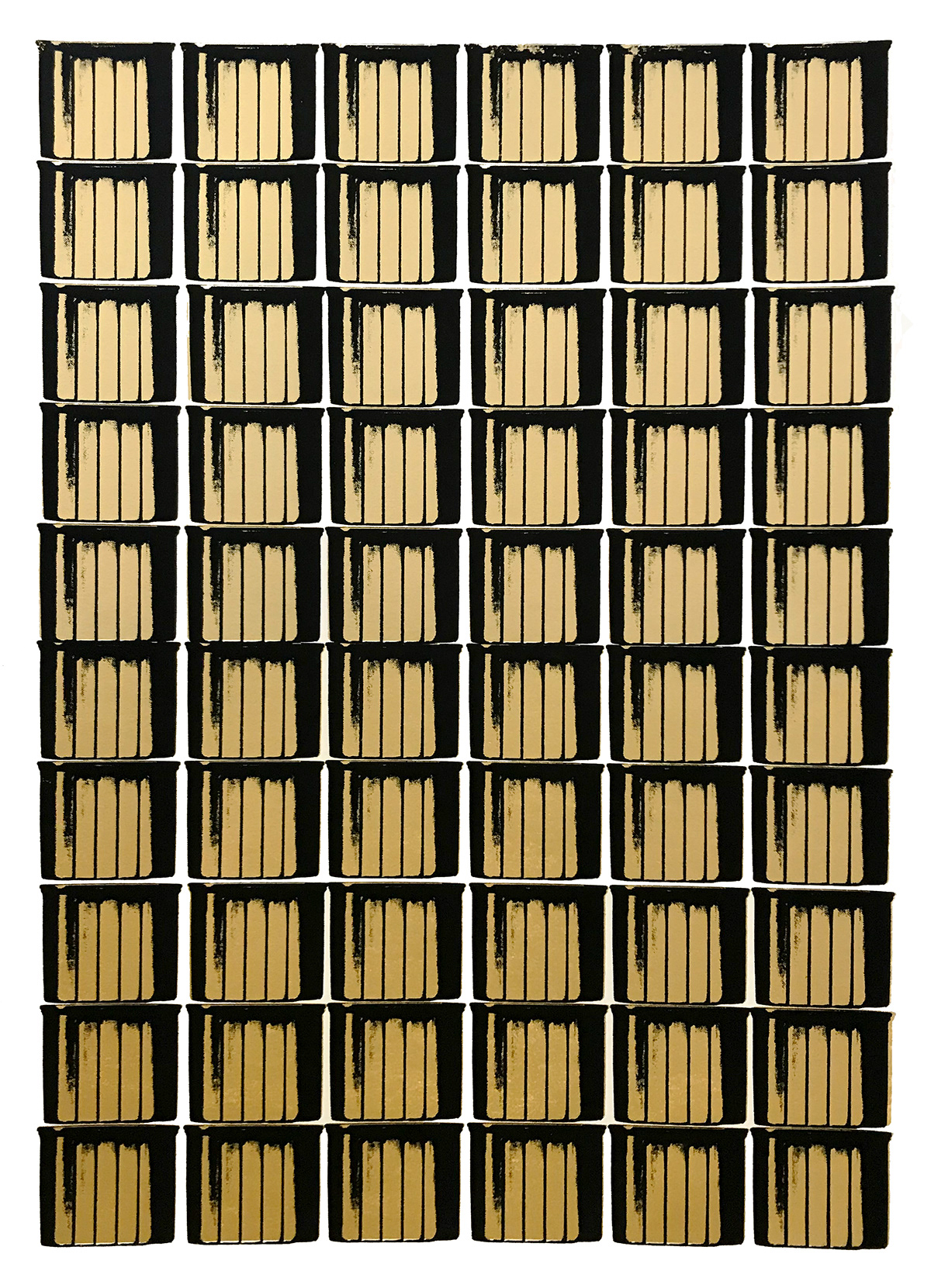
Ingredients: SPAM Cans, Bitmap Halftones, Adobe Photoshop, Stonehenge Paper, Transparent Films, Black Acrylic Ink, Gold Acrylic Ink, Silkscreen
Recipe: Mechanically separate a can of SPAM and then put it back together.
An Homage to Grease
Without grease, there is no SPAM. This poster celebrates grease and the vital role it plays in how we interact with and experience SPAM.
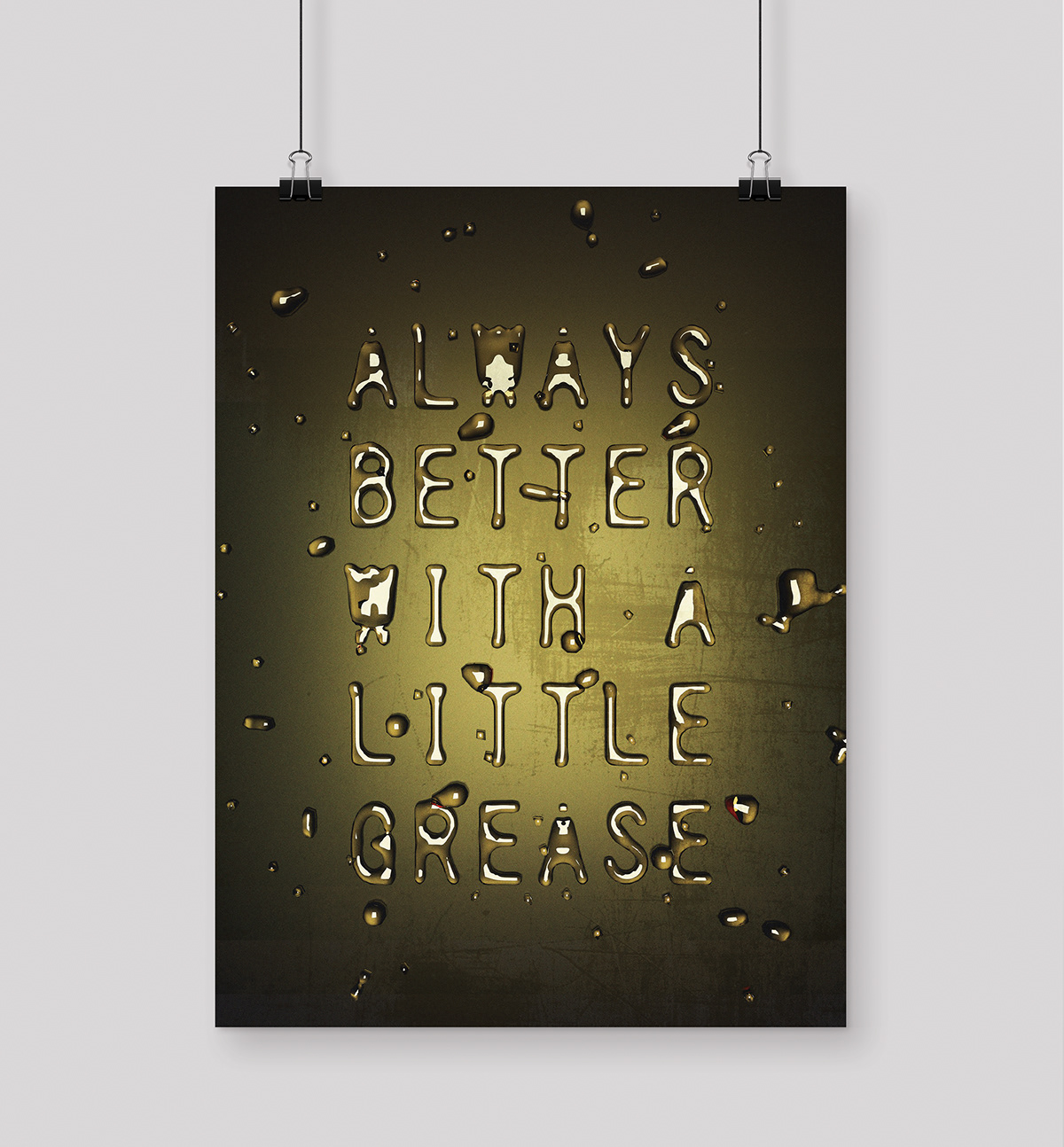
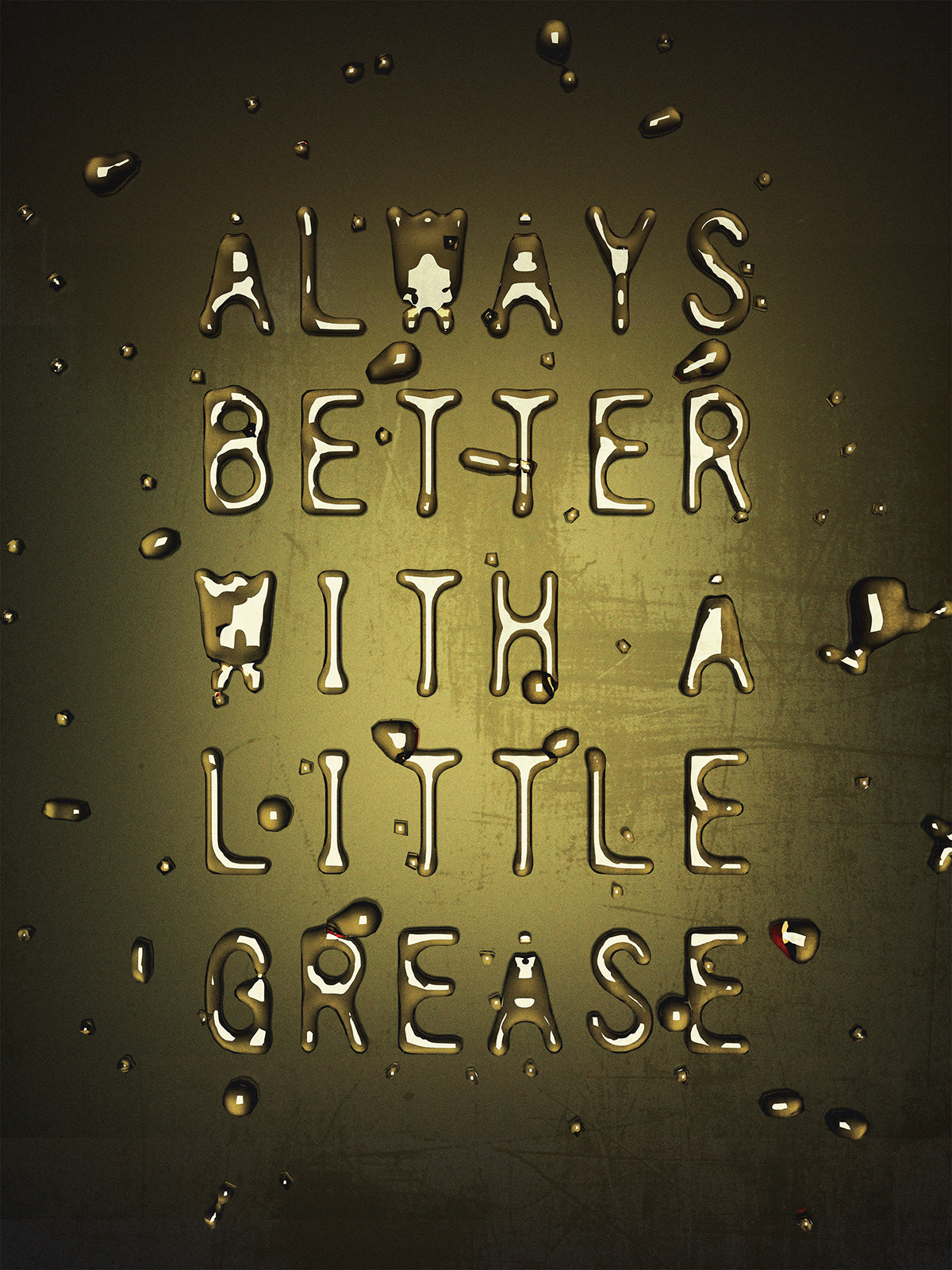
Ingredients: Cinema 4D, Segoe UI Font, Unsplash Free Image, Adobe Photoshop
Recipe: Without grease, there is no SPAM. Write a love note to grease to let it know how much you appreciate it.
Lasts Forever
Is it a good thing for canned meats to last forever? What about design? SPAM, like design, is constantly finding new ways to extend its shelf life and stay relevant. This experiment in preserving SPAM indefinitely resulted in three epoxy resin molds that featured red squares, yellow triangles and blue circles (a nod to the Bauhaus, form following function, and ideas that will also seemingly last forever.) In addition to defying time, these sculptures also defied logic and gravity.

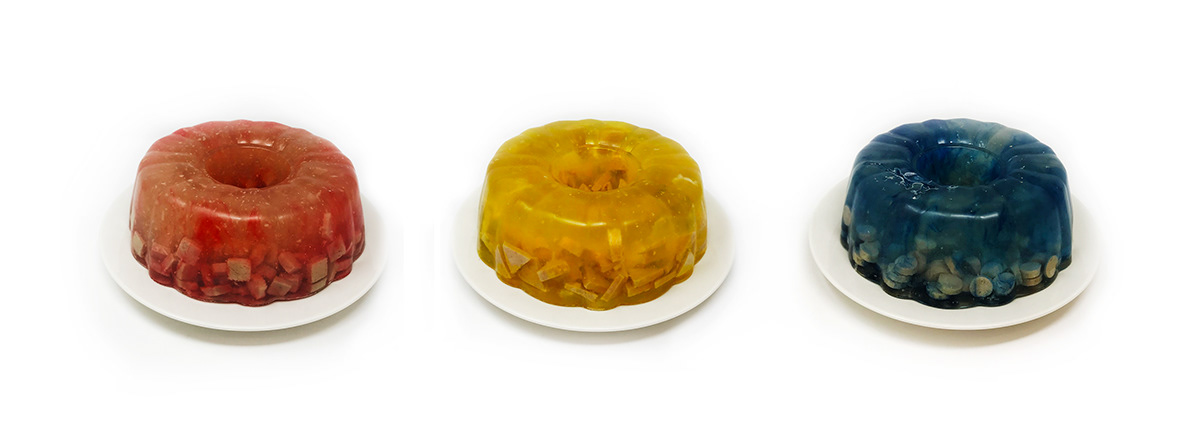
Ingredients: SPAM Original Flavor, Silicone Bundt Mold, Epoxy Resin, Resin Dye
Recipe: Extend SPAM’s shelf life indefinitely.
On Trend
Pins have transcended their fringe popularity to be increasingly trendy. SPAM has managed to stay relevant while simultaneously subverting trend through its campy and kitschy cult following. This mashup pairs together a trendy medium with content that is consciously anti-trend and encourages the promotional brand love associated with wearing a pin and taking it with you wherever you go.


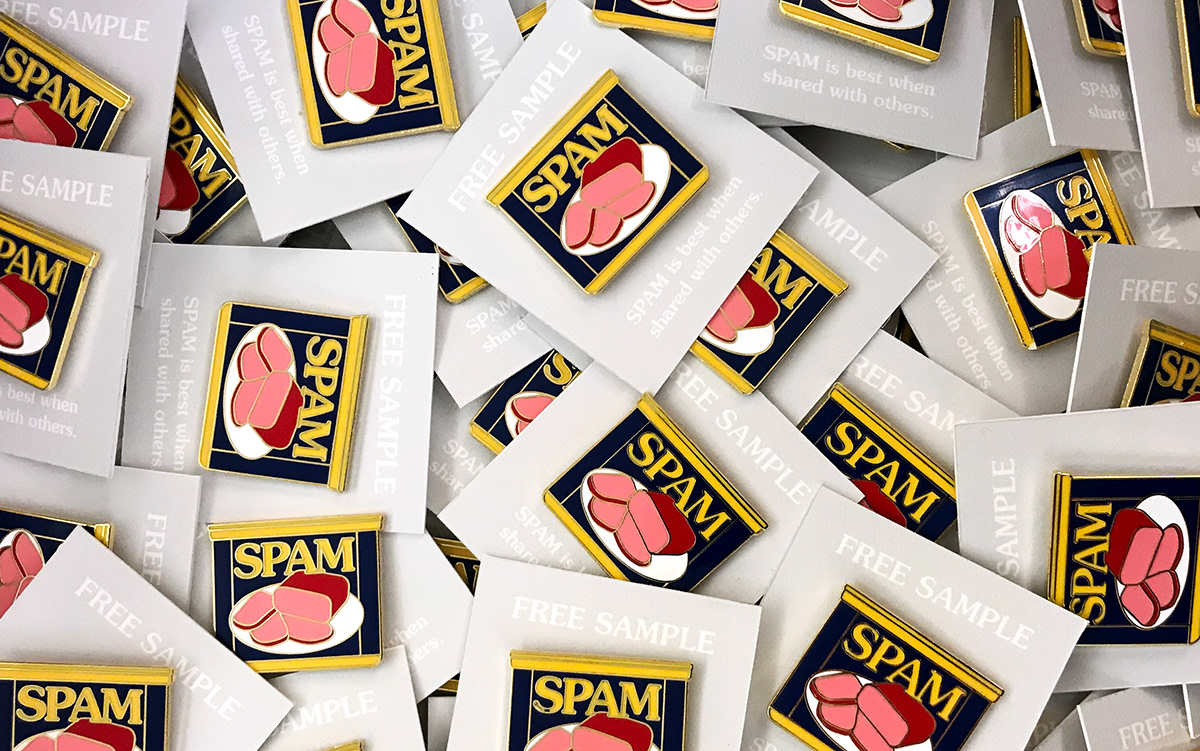
Ingredients: Vintage SPAM Labels, ITC Souvenir Font, Adobe Illustrator, Pantone Colors, Custom Pin Website, Gold Detailing, Butterfly Clasps
Recipe: Find a way to make SPAM more palatable, and able to be shared easily with others.
Exhibition
Select experiments were shown at the Maryland Institute College of Art's Meyerhoff Gallery as part of the 2018 Graphic Design MFA Thesis Exhibition. All posters were exhibited the same way in white frames with gold edges, a direct reference to SPAM cans which are sprayed gold on the outside and are white on the inside. The plexiglass serves as a buffer layer of grease between viewer and experiment. The epoxy resin molds provided a tactile element to the exhibition.



